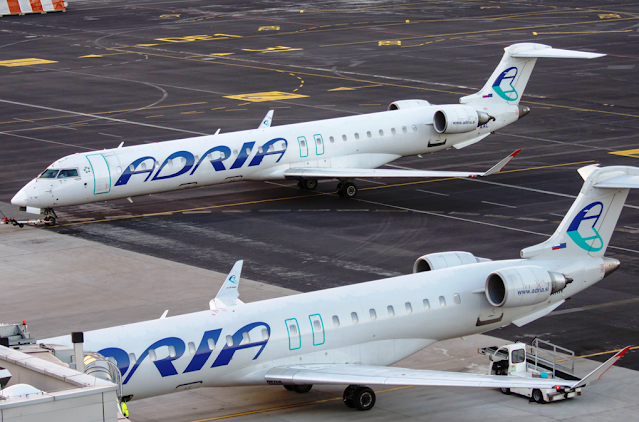Network, fleet and funding strategy for Slovenia’s flag carrier presented
The companies Melkom and Fabce, which were commissioned by the Slovenian Ministry for Infrastructure to undertake a study on ways to improve the country’s air connectivity have presented their findings which show that launching a new flag carrier could be economically viable. The study acknowledged that the state of the Slovenian aviation sector is currently one of the worst in Europe, while short-term forecasts are also unfavourable, with the number of flights in the next eight weeks expected to stand at approximately the same level as last year despite new carriers launching services to Ljubljana. According to the study, at least 300.000 passengers from Slovenia are using alternative airports outside of the country for their travels.
The study suggests a new national carrier should be established by selecting one of four models: services through an ACMI operator, dry-leasing aircraft, acquiring aircraft or a Public Private Partnership (PPP) between the state and a private entity. The experts concluded that a PPP would be the most desirable option. Furthermore, they determined the carrier should either operate CRJ900 or E175 jets. Alternatively, it could opt for a larger-capacity fleet with the Airbus A220s or the E195s. In terms of network development, the study proposes either eleven destinations with sixty weekly flights operated by a three-member fleet, which would include Brussels (eleven weekly), Frankfurt, Skopje, Pristina and Munich (all daily), Zurich (six weekly), Vienna (four weekly), Amsterdam, Copenhagen and Berlin (all three weekly), as well as Athens (two weekly). Alternatively, it has suggested a network with twelve destinations and 61 weekly frequencies, which would include Madrid and Stockholm (both three weekly) but exclude Munich and see an extra rotation to Copenhagen for a total of four per week.
 |
| Proposed network for Slovenia's new national carrier |
The study found that in case of a PPP, the national airline would break-even in its seventh year of operations. The cumulative loss in such a case would reach 35 million euros in the sixth year, and after the tenth year it would amount to 28 million euros. The authors of the study estimated the private partner would have to make an initial capital injection of at least 35 million euros, or seventy million euros in the case of a more ambitious network. According to the study, if both the state and the private partner invested fifty million euros each, the airline would be profitable within ten years. The study further points out that in order for the airline to become profitable, it would have to have an average cabin load factor of 64%, while its fares would have to amount to at least 134 euros. It further stressed the new airline would have to be lean, commercially successful and, at least initially, conservative in its business model.
A separate interdepartmental government taskforce has also found that a national airline, established through a Public Private Partnership, would be the best solution to improving Slovenia’s air connectivity woes in the mid- to long-term. Tanja Šarabon from the Ministry for Infrastructure, who also heads the taskforce, said the Ministry has proposed to initiate procedures for establishing a national carrier as soon as possible. On the other hand, the Minister for Infrastructure, Alenka Bratušek, said if the government adopts the proposed decision to establish a new flag carrier, the airline could launch operations in the summer of 2025 under a "very optimistic scenario".



0 Response to "Network, fleet and funding strategy for Slovenia’s flag carrier presented"
Post a Comment